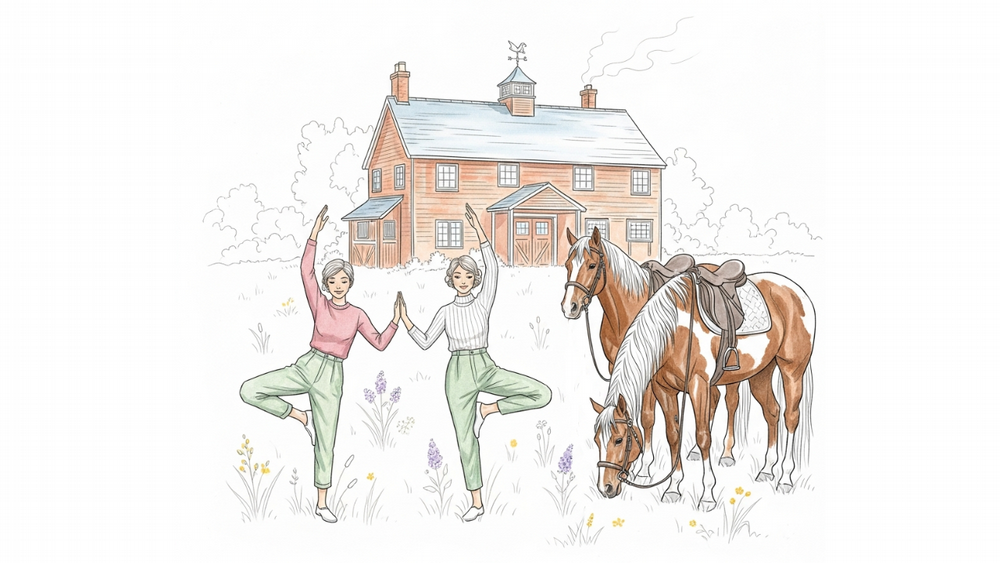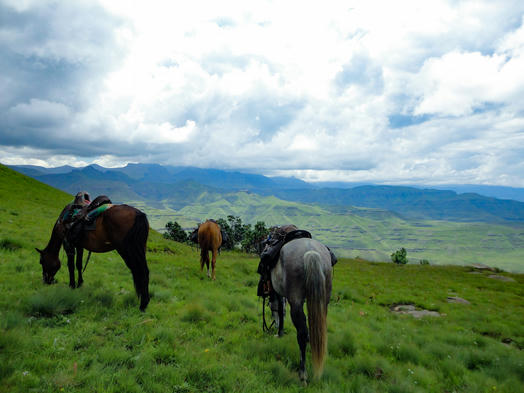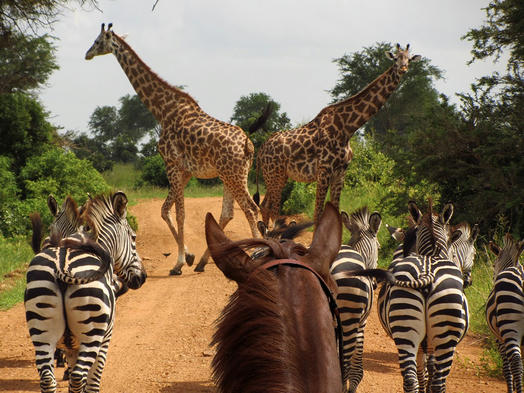Yoga and horseback riding might seem like completely different worlds at first glance — one happens on a mat, the other in the saddle. But in reality, the two complement each other beautifully. Both require balance, breath, awareness, softness, and strength. And both are a kind of moving conversation: one with your own body, the other with a powerful, sensitive animal underneath you.

Here’s how yoga can support your riding… and how gentle movement can support your horse, too.
Yoga for Horseback Riders
Riding asks a lot of the body: open hips, mobile spine, a stable yet supple core, long hamstrings, and shoulders that stay relaxed no matter what the horse is doing. Many riders are strong, but tense; experienced, but asymmetrical; dedicated, but stiff after long rides. Yoga brings ease, balance, and softness back into the picture.
hips and pelvis
The pelvis is the quiet communicator in the saddle. Tight hip flexors or gripping thighs can block the delicate signals you send to your horse. Yoga postures like low lunge, lizard, figure-four, and gentle twists help lengthen the front of the hips and free the lower spine. This makes your seat deeper and your cues clearer — your horse feels everything.


shoulders and breath
Many riders unknowingly tense their shoulders and hold their breath, especially in canter or while learning new skills. Shoulder openers like downward-facing dog, cat–cow, and deep breathing practices help soften that pattern. A relaxed upper body translates directly into a calmer, more confident horse.

core and balance
A stable core keeps you centered in transitions, small spooks, or uneven terrain. Think boat pose, plank variations, and kneeling balance work. Not to “brace,” but to stay tall and responsive instead of collapsing into your lower back.


post-ride stretching
After hours in the saddle, the body craves length. Use gentle hamstring stretches (e.g. janu sirsasana), spinal twists, the pigeon pose, and calf stretches to unwind your muscles. Five minutes after untacking can make tomorrow’s ride feel entirely different.


Yoga for Horses
Yes — yoga isn’t just for riders. Horses benefit deeply from intentional stretching, groundwork, and slow mobility work. These practices improve flexibility, body awareness, relaxation, and trust. They also give you a chance to interact with your horse in a calm, non-riding way.
neck and poll release
Gentle carrot stretches, slow neck circles, and 'head down' exercises help dissolve tension. Many horses hold stress here. This is why it’s yoga, not just stretching. The physical work is only one layer. Another layer is to calm the fluctuations of the mind. When riders apply this philosophy with their horses, offering patient and well-timed pressure, the latter become more balanced and connected.
A beautiful bridge between yoga and horsemanship is the concept of yielding to pressure. In yoga, the right kind of pressure invites your body to soften, open, and explore new space. Too much pressure — whether it’s a deep stretch pushed too far or a cue given too strongly — triggers resistance. The body braces, the breath shortens, and even if you “achieve” the position, you may create strain or a negative imprint of pain. But when the pressure is gentle, steady, and something you can comfortably stay with for at least five breaths — or even minutes in yin yoga — the body begins to release.
spinal mobility
Just like humans, horses benefit from a fluid spine. Back lifts, belly lifts, and slow lateral bends (performed from the ground) help keep their back healthy and supple. These movements are wonderful for older horses or those returning to work after time off.
hip and hind-end stretches
Slow controlled leg stretches — forward, backward, and slightly outward — help with stiffness in the hips and improve stride quality. Always move slowly and watch their expression; a relaxed horse will soften the eyes, lick, chew, or sigh.
breath and relaxation
Horses read our nervous system instantly. Practicing slow breathing next to your horse, with one hand on their shoulder or rib cage, helps regulate both of you.
Why Yoga + Horses is Such a Powerful Combination
Together, they create a partnership built on trust instead of tension, connection instead of force, and presence instead of habit.
And honestly? There’s nothing more healing than rolling out your mat next to a grazing horse — letting your breath slow down as the whole world softens with you.


